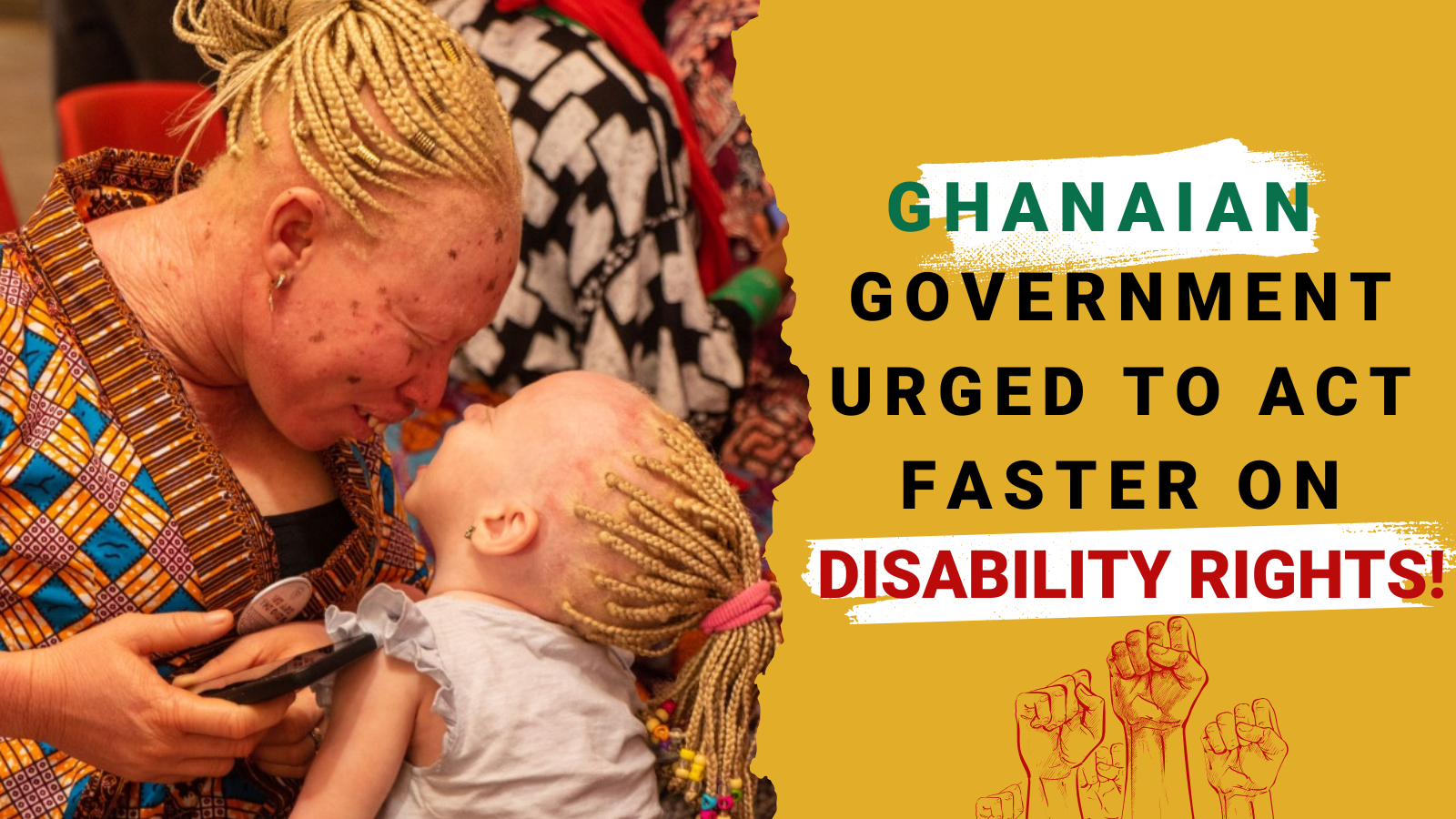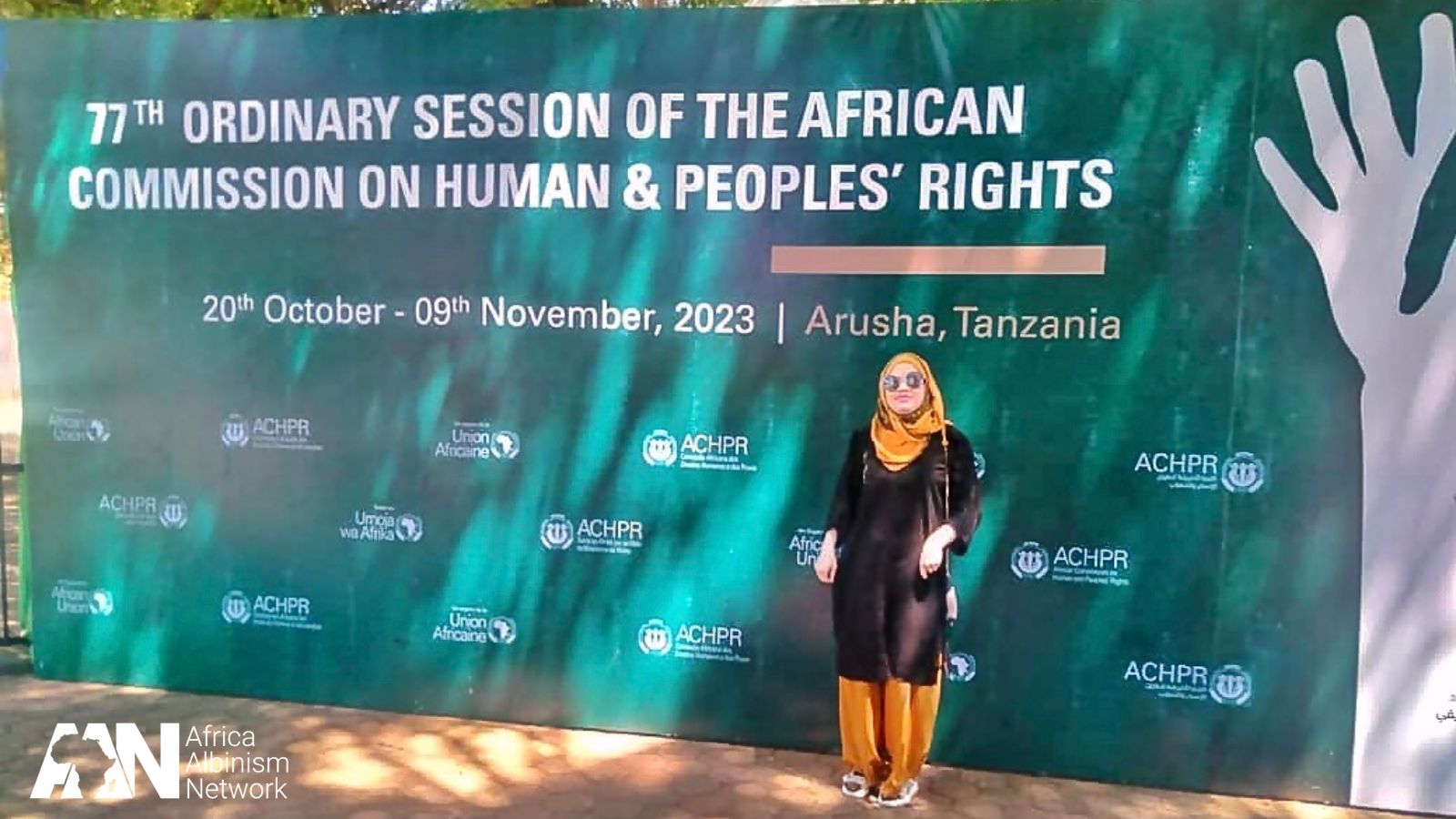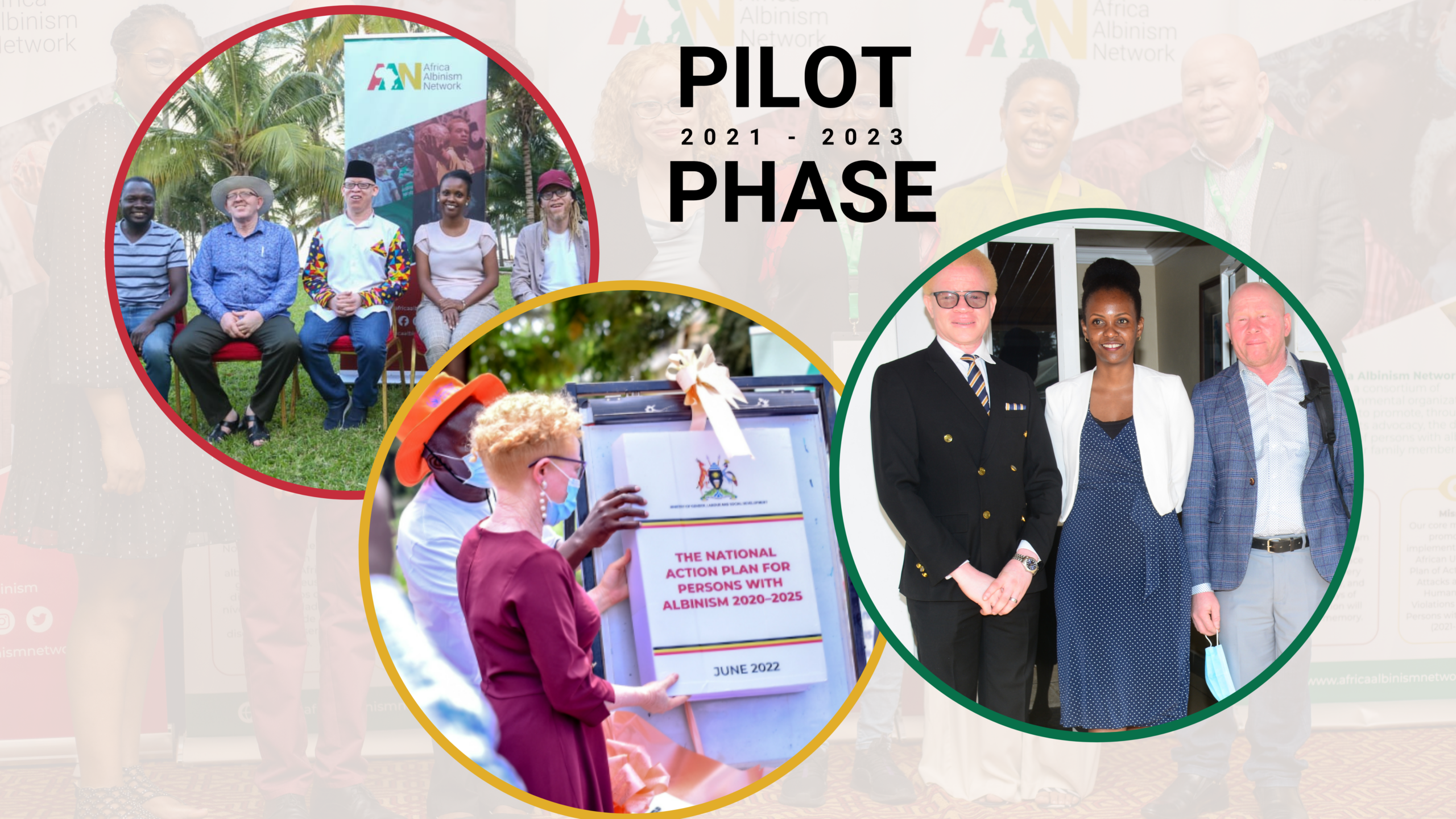| Click to read the Full Survey Report below in your language: |
African Albinism Network (AAN) commissioned Impact Mapper to conduct a survey to understand the general landscape and trends on advocacy and human rights work for people with albinism in Africa. The goal of this survey is to provide an overview of the albinism movement by mapping the basic profile, priorities, issues of focus, and governance structures of organizations that are working to ensure the human rights of people with albinism in Africa. The study employed a mixed methodology namely focus group discussions (FGDs) and a survey, reaching 48 organizations from 23 countries. Organizations participating in the study represented work across the Sub-Saharan African region, such as Angola, Benin, Burundi, Cameroon, Côte d’Ivoire, the Democratic Republic of Congo (DRC), Eswatini, Ghana, Kenya, Madagascar, Mali, Malawi, Mozambique, Namibia, Niger, Nigeria, Rwanda, South Africa, Tanzania, Togo, Uganda, Zambia, and Zimbabwe.
Below are the key findings of the study:
- The majority of the organizations have strong experience in human rights and advocacy work, having worked in the sector for more than five years. The organizations’ leaders have been trained in human rights and advocacy work and noted that they are generally comfortable doing advocacy work on human rights. Some even articulated that they see themselves as experts in this field.
- At the policy level, while the majority of the organizations (85%) are aware of the African Union (AU) Plan of Action on Albinism, half of the respondents noted that their countries have not yet adopted it. In fact, only five of the 48 respondents said that their countries already adopted the plan of action.
- The use of National Action Plans on Albinism emerged to be the top advocacy strategy employed by organizations. Other top strategies used for advocacy work are evidence-based research to present reliable data for decision-making and public education and community forums to gather key information and converge key stakeholders. Use of media is also used to sensitize the audience on the realities of people with albinism.
- Ongoing activities by popularity: Public awareness is the top advocacy activity1 the organizations in the sample identified as important, followed by media and government advocacy. Capacity building and training of people with and without albinism are also important activities of desired focus.
- The main target audiences for advocacy work and other services included: people with albinism and their families, especially those living in ‘hotspots’ of attacks, followed by the government, media, and teachers/educators.
- Basic Services: Aside from general strategic advocacy, advocacy for basic services is also necessary, such as the provision of devices for low vision and health services, employment promotion for people with albinism, and support services for victims of attacks.
- Access to basic services in health and education emerged to be the top advocacy priorities2 of the organizations meaning the majority of respondent organizations work in these areas. This is followed by advocacy work to access employment and justice for people with albinism.
- Main areas of work in health rights advocacy revolved around access to skin and eye care while advocacy work on education focused on inclusive education and promotion of access to adaptive devices to aid in coursework.
- Advocacy work on employment concentrated on access to vocational training programs for people with albinism, followed by access to information for employment opportunities, inclusive employment, and safe working conditions.
- To promote access to justice, organizations’ work includes guiding and providing information about laws, key experts, and the cost of lawyers; as well as advocacy for speedy judicial proceedings such as court follow-ups.
- The highest funding amount received annually by the organizations surveyed is above $50,000 (n=11) while some shared that the highest they received annually is $5,000 (n=7). Only six out of the 48 respondents reported not receiving any funding. Twelve organizations received between $25,000 and $50,000.
- The majority of the organizations received funding, and the highest funding amounts came from international NGOs, followed by intergovernmental organizations (e.g., UN agencies), and the government.
- The organizations have partnered with various sectors such as healthcare, media, international NGOs, government, academia, law enforcement, religious groups, legal institutions, and private corporations.
The organizations recommended that governments, donors, and AAN, could further support through funding and providing capacity building on operations, resource mobilization, and advocacy work. AAN is also needed to address issues in the area of innovation, low buy-in of stakeholders and other duty bearers, lack of unity among leaders, partnership gaps among ecosystem actors, lack of proper system/mechanism to register people with albinism, lack of proper system/mechanism to document attacks on people with albinism and insufficient representation of people with albinism in decision-making processes that affect them.
Another recommendation for governments and donors is to support building the capacities of organizations through implementing a holistic training strategy to include topics such as leadership, management, resource mobilization, etc. and, supplemented by the provision of core support for the organizations’ operations (e.g., getting office space and transportation costs, etc.). Setting up a monitoring and evaluation framework is also vital in order to programmatically guide, monitor, and sustain these capacity-building interventions over time.
At the macro level, governments, donors, and AAN can support strengthening movement building and advocacy. This includes forging stronger relationships and facilitating dialogues within and among existing networks. It is also important for AAN to expand its reach by reaching out to like-minded organizations, creating alliances with key regional and international stakeholders, and/or organizing a general assembly to draft a resolution or launch a campaign. Governments and donors can further support by funding innovative collaborations and coalitions, mobilization strategies, and regional advocacy and campaign strategy. AAN can also support mapping and monitoring state efforts in national data collection efforts, map and compare policies and practices across countries, and conduct further research such as emerging issues on people with albinism all towards scaling up advocacy efforts in the region.
Survey Interpretation by AAN
Upon review of the survey response data, we see three crucial themes emerging.
Theme 1: Holistic and Cross-Cutting Advocacy Strategies are Preferred
Nearly all albinism groups are conducting awareness-raising or public education activities as a key advocacy strategy. This is not surprising given that belief-based stigma remains an issue. Moreover, this strategy is relatively low-cost with potential for high impact. It is also transferrable to various domains whether health, education, police or judiciary, meaning impact can be multi-sectoral and holistic to tackle discrimination and exclusion in all areas of life. Another key strategy of choice is using the National Action Plans. These too are multi-sectoral and hold potential to support sustainable interventions to advance the protection of people with albinism from various sectors in society, in a more sustained and systematic manner.
Theme 2: The Right to Life appears to drive the advocacy priorities of albinism groups
“Priority” areas are better understood as the areas where most albinism groups currently work. The top four areas were health, education, access to justice, and employment. That these are currently the areas of most intervention for albinism groups is reasonable since:
- Health, particularly prevention, and treatment of skin cancer is a key priority for albinism groups given that it is a fundamental aspect of survival/the right to life and without which the other rights cannot be accessed.
- Education is a key priority given that without it, the right to life of people with albinism can be compromised. People with albinism who have low literacy may end up working outdoors and contracting skin cancer which remains a deadly force in many parts of the continent.
- Access to employment and justice are also indirectly tied to the right to life since both can facilitate access to a decent livelihood, health, and security.
The prioritization of health and education confirms the longstanding hierarchy of needs illustrated by the psychologist, Abraham Maslow, whereby, the most primordial needs linked to survival are the foundation of the other needs.
This also suggests that the priorities not highlighted by a majority such as psychosocial concerns or particular concerns of women and children may in the future become a priority, once the current priorities linked to the basic right to life have been met or improved. This is further supported by the fact that the albinism organizations with the higher budgets were the majority organizations working on issues pertaining to women and children impacted by albinism as well as “other” priorities not identified by other respondents.
Theme 3: The Survey Results Affirm the AU Plan of Action on Albinism
The key advocacy strategies and priorities identified by albinism groups strongly align with the measures that make up the AU Plan on Action on Albinism in Africa (2021-2031). This is not a surprise given the participation of albinism group leaders in the development of that Plan of Action. This consistency should reassure potential supporters of the movement that there is a clear and consistent unity of vision among albinism groups in the region.
Further Insights
The above themes are based on the basic collation of responses alone. We look forward to conducting further (comparative) analysis of the data to get more insights.
| Subscribe to our newsletter to get this and other insights on albinism in Africa HERE |


